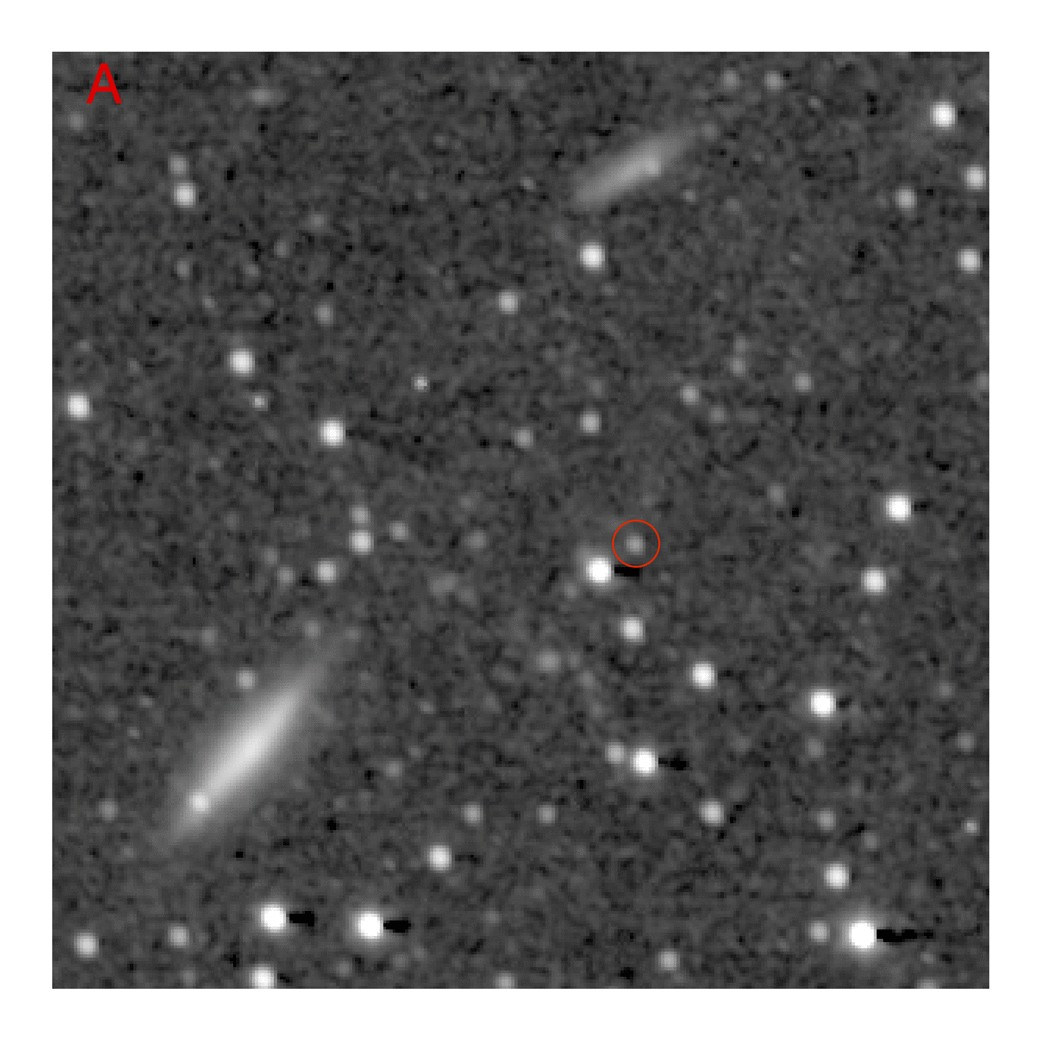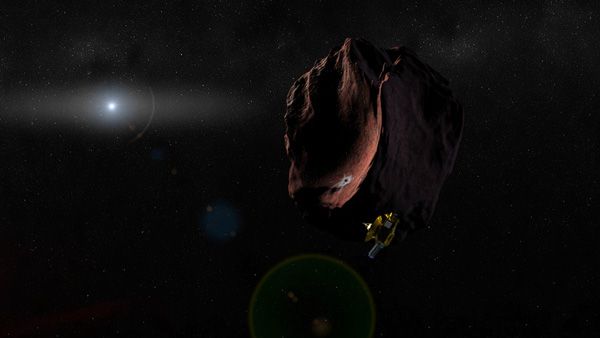
NASA / JHUAPL / SwRI
New Horizons Spies a Kuiper Belt Companion (News Release - August 31)
NASA’s New Horizons is doing some sightseeing along the way, as the spacecraft speeds toward a New Year’s Day 2019 date with an ancient object in the distant region beyond Pluto known as 2014 MU69.
New Horizons recently observed the Kuiper Belt object Quaoar (“Kwa-war”), which – at 690 miles or 1,100 kilometers in diameter – is roughly half the size of Pluto. This animated sequence shows composite images taken by New Horizons’ Long Range Reconnaissance Imager (LORRI) at four different times over July 13-14: “A” on July 13 at 02:00 Universal Time; “B” on July 13 at 04:08 UT; “C” on July 14 at 00:06 UT; and “D” on July 14 at 02:18 UT. Each composite includes 24 individual LORRI images, providing a total exposure time of 239 seconds and making the faint object easier to see.
New Horizons’ location in the Kuiper Belt gives the spacecraft a uniquely oblique view of the small planets like Quaoar orbiting so far from the sun. When these images were taken, Quaoar was approximately 4 billion miles (6.4 billion kilometers) from the sun and 1.3 billion miles (2.1 billion kilometers) from New Horizons. With the oblique view available from New Horizons, LORRI sees only a portion of Quaoar’s illuminated surface, which is very different from the nearly fully illuminated view of the Kuiper Belt object from Earth. Comparing Quaoar from the two very different perspectives gives mission scientists a valuable opportunity to study the light-scattering properties of Quaoar’s surface.
In addition to many background stars, two far away galaxies – IC 1048 and UGC 09485, each about 370 billion times farther from New Horizons than Quaoar – are also visible in these images. Unlike the galaxies and stars, Quaoar appears to move across the background scene due to its much closer distance. Other objects which appear to move in these images are camera artifacts.
In June the New Horizons mission received the go-ahead to fly onward to 2014 MU69 -- considered one of the early building blocks of the solar system -- with a planned rendezvous of Jan. 1, 2019.
Source: NASA.Gov
****

NASA / Johns Hopkins University Applied Physics Laboratory / Southwest Research Institute

No comments:
Post a Comment